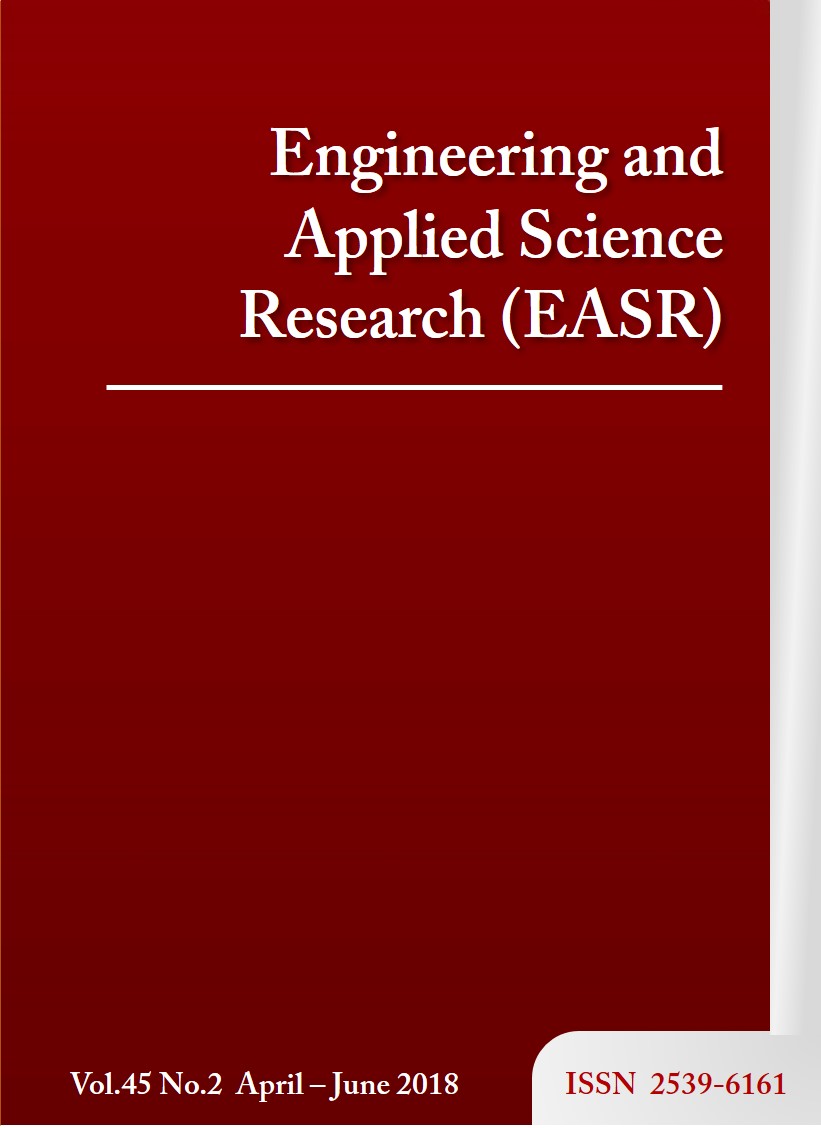Urbanization and initial groundwater quality investigation in Malabe, Sri Lanka
Main Article Content
Abstract
Malabe, an eastern suburb of the capital city of Colombo, is one of the most rapidly urbanized and industrialized areas in Sri Lanka. Groundwater is a valuable resource in Malabe and it is being polluted. Malabe is located in a wet climatic zone with a lateritic aquifer that normally contains water with a very low pH that can cause quality problems. Our objective was to investigate and analyze the Malabe groundwater quality to understand the characteristics of significant parameters and their correlation so that policy planning can be correctly done. Groundwater samples from 16 water wells were collected and evaluated for eight physicochemical parameters, i.e., pH, turbidity, electrical conductivity (EC), color, nitrate (NO3), nitrite (NO2), sulfate (SO4), and phosphate (PO4). Two biological parameters were also determined for four wells. The essence of this finding is that the groundwater is very acidic, has a very low EC, but high coliform counts. Multivariable statistics of the data were performed using Pearson’s correlation and principal components analysis (PCA) using the Princom package in the R statistical package. The first four principal components (PCs) explained 79.8 % of the total observed variance in the data. The most significant parameters from the first principal component, PC1, were the positive correlations of turbidity and PO4, and negative correlations of EC and NO3. A significant positive loading of pH with a negative loading of SO4 was illustrated in PC2. These findings were similar to the correlation results. We concludes that the high acidity of the groundwater is primarily caused by industrial waste. The groundwater pollution of the Malabe area was not cause by inorganic fertilizer but by anthropogenic waste runoff. Our finding is crucial for groundwater quality management in the study area.
Article Details
This work is licensed under a Creative Commons Attribution-NonCommercial-NoDerivatives 4.0 International License.
References
Asanoa, T. & Cotruvob, J., 2004. Groundwater recharge with reclaimed municipal wastewater: health and regulatory considerations. Water Research, 38(8), pp. 1941-1951.
Barbosa, A., Fernandes, J. & David, L., 2012. Key issues for sustainable urban stormwater management. Water Research, 46(20), pp. 6787-6798.
Brammer, H. & Ravenscroft, P., 2009. Arsenic In Groundwater: A Threat To Sustainable Agriculture In South And South-East Asia. Environment International, 35(3), pp. 647-654.
Clesceri, L., Greenberg, A. & Eaton, A., 1999. Standard methods for the examination of water and wastewater. 20 ed. Washington, DC, USA: American Public Health Association.
De Vries, J. & Simmers, I., 2002. Groundwater recharge: an overview of processes and challenges. Hydrogeology, 10(1), pp. 5-17.
Dillon, P., 2005. Future management of aquifer recharge. Hydrogeology, 13(1), pp. 313-316.
Douglas, I., 1983. The Urban Environment. 1st ed. London: Edward Arnold.
Drewes, J. & Fox, P., 1999. Fate of natural organic matter (NOM) during groundwater recharge using reclaimed water. Water Science and Technology, 40(9), pp. 241-248.
Durham, B., Rinck-Pfeiffer, S. & Guendert, D., 2003. Integrated Water Resource Management — through reuse and aquifer recharge. Desalination, 152(1-3), pp. 333-338.
FAO, 2010. Global Forest Resources Assessment 2010, Rome, Italy: United Nations.
Graniel, C., Morris, L. & Carrillo-Rivera, J., 1999. Effects Of Urbanization On Groundwater Resources Of Merida, Yucatan, Mexico. Environmental Geology , 37(4), pp. 303-312.
Kanarek, A. & Michail, M., 1996. Groundwater recharge with municipal effluent: Dan region reclamation project, Israel. Water Science and Technology, 34(11), pp. 227-233.
Kolpin, D., Barbash, J. & Gilliom, R., 1998. Occurrence of Pesticides in Shallow Groundwater of the United States: Initial Results from the National Water-Quality Assessment Program. Environ. Science and Technology, 32(5), pp. 558-566.
Lindh, G., 1983. Effects de l'urbanization sur leas eaux souterrraines. In: M. L., ed. Water and the City. Paris: UNESCO Press, pp. 162-166.
Lindström, S., Mattsson, E. & Nissanka, S.P., 2012. Forest cover change in Sri Lanka: The role of small scale farmers. Applied Geography, Volume 34, pp. 680-692.
Liu, G., Wu, W. & Zhang, J., 2005. Regional Differentiation Of Non-Point Source Pollution Of Agriculture-Derived Nitrate Nitrogen In Groundwater In Northern China. Agriculture, Ecosystems & Environment, 107(2-3), pp. 211-220.
Marino, M. A., 1975. Artificial groundwater recharge, I. Circular recharging area. Journal of Hydrology, 25(3-4), pp. 201-208.
Martínez, D. et al., 2014. Distribution and origin of nitrate in groundwater in an urban and suburban aquifer in Mar del Plata, Argentina. Environmental Earth Sciences, 72(6), pp. 1877-1886.
Panabokke, C., 2007. Groundwater conditions in Sri Lanka: A geomorphic perspective. 1st ed. Colombo: National Science foundation of Sri Lanka.
Power, J. & Schepers, J., 1989. Agriculture, Ecosystems & Environment. Nitrate Contamination Of Groundwater In North America, 26(3-4), pp. 165-187.
Scanlon, B. et al., 2005. Impact of land use and land cover change on groundwater recharge and quality in the southwestern US. Global Change Biology, 11(10), p. 1577–1593.
Sharma, S. & Chhipa, R., 2013. Interpretation of ground water quality parameter for selected area of Jaipur using regression and correlation analysis. Journal of Scientific & Industrial Research , Volume 72, pp. 781-783.
Sophocleous, M., 2005. Groundwater Recharge And Sustainability In The High Plains Aquifer In Kansas, USA. Hydrogeology, 13(2), pp. 351-365.
USGS, 1984. How much water is there on, in, and above the Earth?. [Online]
Available at: https://water.usgs.gov/edu/earthhowmuch.html
[Accessed 21 January 2017].
Villholth, K. & Rajasooriyar, L., 2010. Groundwater Resources and Management Challenges in Sri Lanka–an Overview. Water Resources Management, 24(8), p. 1489–1513.
Yusuf, K., 2007. Evaluation Of Groundwater Quality Characteristics In Lagos-City. Journal of Applied Sciences, 7(13), pp. 1780-1784.
Zubair, L., Siriwardhana, M., Chandimala, J. & Yahiya, Z., 2008. Predictability of Sri Lankan rainfall based on ENSO. International Journal of Climatology, 28(1), pp. 91-101.


